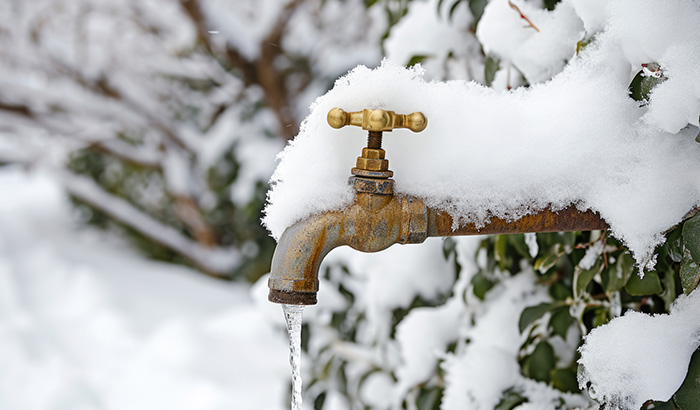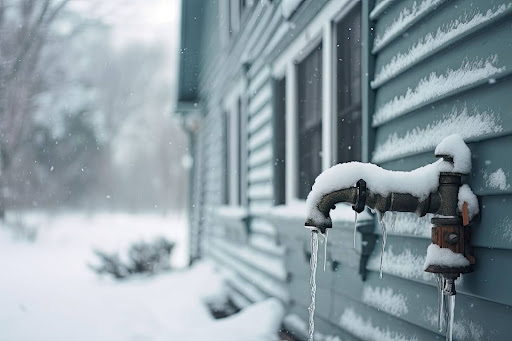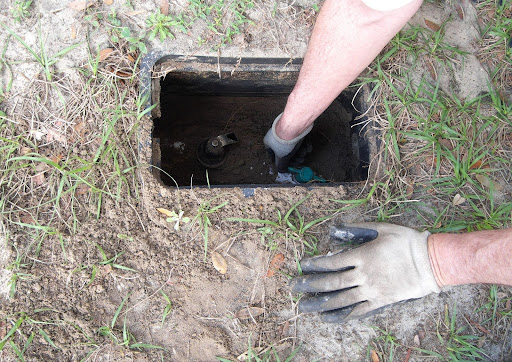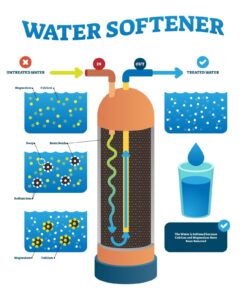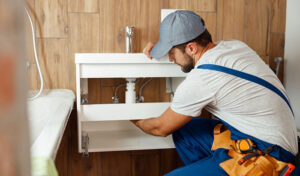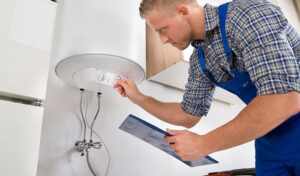Welcome to our guide on winterizing your plumbing. Winterizing plumbing is necessary to prevent costly and inconvenient damages like frozen pipes and water leaks.
By taking proactive measures to winterize your plumbing, you avoid these issues, ensuring your home remains safe and dry throughout the winter season. Additionally, proper winterization can lead to substantial savings by reducing the risk of emergency repairs and conserving energy.
In this guide, we’ll share expert tips on how to effectively winterize your plumbing. These steps will help protect your pipes, maintain your water heater’s efficiency, and ensure your home’s plumbing system operates smoothly during the cold months. Let’s get your home ready for winter and save you the headache and expense of winter plumbing problems.
Tip 1: Insulate pipes
Insulating your pipes is a crucial step in winterizing plumbing. When temperatures drop, unprotected pipes — especially those in unheated areas like basements, attics, and garages — are at risk of freezing. Frozen pipes may lead to cracks or bursts, causing significant water damage to your home.
To effectively insulate your pipes, start by identifying the pipes most susceptible to freezing. To insulate your pipes, use easy-to-install foam pipe insulation sleeves, which are available at most hardware stores. For pipes in particularly cold areas, consider using thermostatically controlled heat tape, which activates when temperatures drop.
Ensure the insulation fits snugly without gaps. Proper insulation prevents freezing and improves energy efficiency by reducing heat loss from hot water pipes.
Tip 2: Drain outdoor faucets and hoses
Start by shutting off the water supply to your outdoor faucets, then open the faucets to allow any remaining water to drain out. This process prevents water from getting trapped in the pipes, where it could freeze and expand and cause damage.
Next, disconnect and drain your garden hoses. Water left in hoses may freeze and expand, potentially damaging the hose and connected plumbing. After draining, store your hoses in a dry, indoor area to protect them from the harsh winter conditions. Taking these simple steps extends the life of your outdoor plumbing and hoses.
Tip 3: Check for leaks
Before winter sets in, inspect your plumbing system for any leaks. Even small leaks can become major problems when temperatures drop. Leaks lead to water damage and increase the risk of pipes freezing and bursting.
To check for leaks, examine all exposed pipes, faucets, and fixtures for any signs of dripping water. Pay special attention to areas under sinks and around appliances like water heaters and dishwashers. Also, listen for the sound of running water when all water sources are turned off, as this indicates a hidden leak.
If you find any leaks, it’s important to repair them promptly. Addressing leaks helps winterize your plumbing, conserves water, and reduces your utility bills.
Tip 4: Seal gaps and cracks
Sealing gaps and cracks where pipes enter your home is an effective way to prevent cold air intrusion, which leads to winter plumbing problems. Unsealed openings allow freezing air to reach your pipes, increasing the risk of freezing and potential bursts.
To protect your plumbing, inspect the areas where pipes enter your home, such as basements, crawl spaces, and utility rooms. Look for any gaps or cracks around these entry points.
Use caulk or expandable foam insulation to seal these openings. These materials are readily available at hardware stores and are easy to apply.
Caulk is ideal for smaller gaps and is easy to apply with a caulking gun. Expandable foam insulation is more suitable for larger openings as it can fill bigger spaces and provide an airtight seal. Be sure to choose weather-resistant materials so the seal remains effective throughout the winter.
Sealing these gaps prevents cold air from affecting your pipes and improves your home’s overall energy efficiency by reducing drafts and heat loss.
Tip 5: Adjust the water heater
Adjusting your water heater settings is a smart way to balance energy savings with the need to prevent freezing. As temperatures drop, your water heater works harder to provide hot water, sometimes increasing your energy bills.
To optimize efficiency, consider lowering the temperature setting to around 120 degrees Fahrenheit. This temperature is hot enough for daily needs while reducing energy consumption. However, be cautious not to set it too low to avoid the ideal temperature for legionella bacteria growth.
Additionally, if your water heater is located in an unheated area, try insulating it with a water heater blanket to maintain the temperature and reduce energy costs. Regular maintenance, such as flushing out sediment, also improves efficiency and extends the life of your water heater. Remember, a well-maintained water heater is more efficient and reliable, especially during the colder months.
Tip 6: Know how to shut off your water
Knowing how to shut off the main water supply in your home is invaluable in plumbing emergencies like a burst pipe or a major leak. Quick action helps prevent extensive water damage and costly repairs.
To locate your main shut-off valve, check where the water line enters your home, often in the basement, garage, or near the water heater. The valve is typically a lever or wheel. For a lever, turn it perpendicular to the pipe to shut off the water. For a wheel, turn it clockwise until it stops.
Familiarize yourself with the shut-off valve’s location and operation before an emergency arises. This knowledge is invaluable for protecting your home from water damage during winter or any time of year.
Tip 7: Consider pipe heating cables
Pipe heating cables, also known as heat tape, are an excellent solution for preventing your pipes from freezing during the winter. These cables are designed to provide a consistent heat source along the length of your pipes, keeping the water inside from freezing.
When installing pipe heating cables, it’s important to follow the manufacturer’s instructions carefully. Start by wrapping the cable along the pipe and securing it with heat-resistant tape. Ensure that the cable is not overlapping itself to avoid overheating.
Once installed, always plug the cable into a grounded outlet and avoid using an extension cord. Inspect the cables regularly for any signs of wear or damage.
While pipe heating cables are a great preventative measure, you should use them as part of a broader winterization strategy for maximum effectiveness.
Tip 8: Keep the house warm
While keeping your house warm during the winter keeps you comfortable, it also helps prevent your pipes from freezing.
Maintain a consistent temperature in your home, even at night or when you’re away. Setting your thermostat to at least 55 degrees Fahrenheit can help prevent the pipes from freezing.
To keep your home warm, use weather stripping on doors and windows to prevent drafts. Consider using programmable thermostats to regulate the temperature automatically. Also, open cabinet doors under sinks to allow warmer air to circulate around the pipes. A well-heated home effectively prevents frozen pipes while maintaining a comfortable living environment during the cold winter months.
Tip 9: Get a professional inspection
Having a professional plumber inspect and winterize your plumbing system offers numerous benefits. A skilled technician can identify potential issues that might not be apparent to the untrained eye.
During a professional inspection, the plumber will check all facets of your plumbing system, including pipes, faucets, water heaters, and outdoor spigots. They will assess the insulation of your pipes, test for leaks, and ensure your system is optimized for the winter months. This comprehensive check can prevent costly repairs and give you peace of mind knowing your plumbing is prepared for the cold weather.
Call on Professional Plumbing Systems to winterize your plumbing
At Professional Plumbing Systems, we’re here to assist you in winterizing your plumbing and safeguarding your home against harsh winter conditions. Our team of experts is equipped with the knowledge and tools to provide comprehensive winterization services to keep your plumbing system functional and efficient throughout the season.
Whether you need help insulating pipes, sealing gaps, or adjusting your water heater settings, our professionals are ready to provide top-notch service. We understand the challenges of winter plumbing and are committed to helping you avoid common issues like frozen pipes and leaks.
Don’t wait for a plumbing emergency to strike. Contact Professional Plumbing Systems today at 801-901-9750 or visit our website to schedule a professional inspection or service. Let us take the worry out of winterizing your plumbing.

